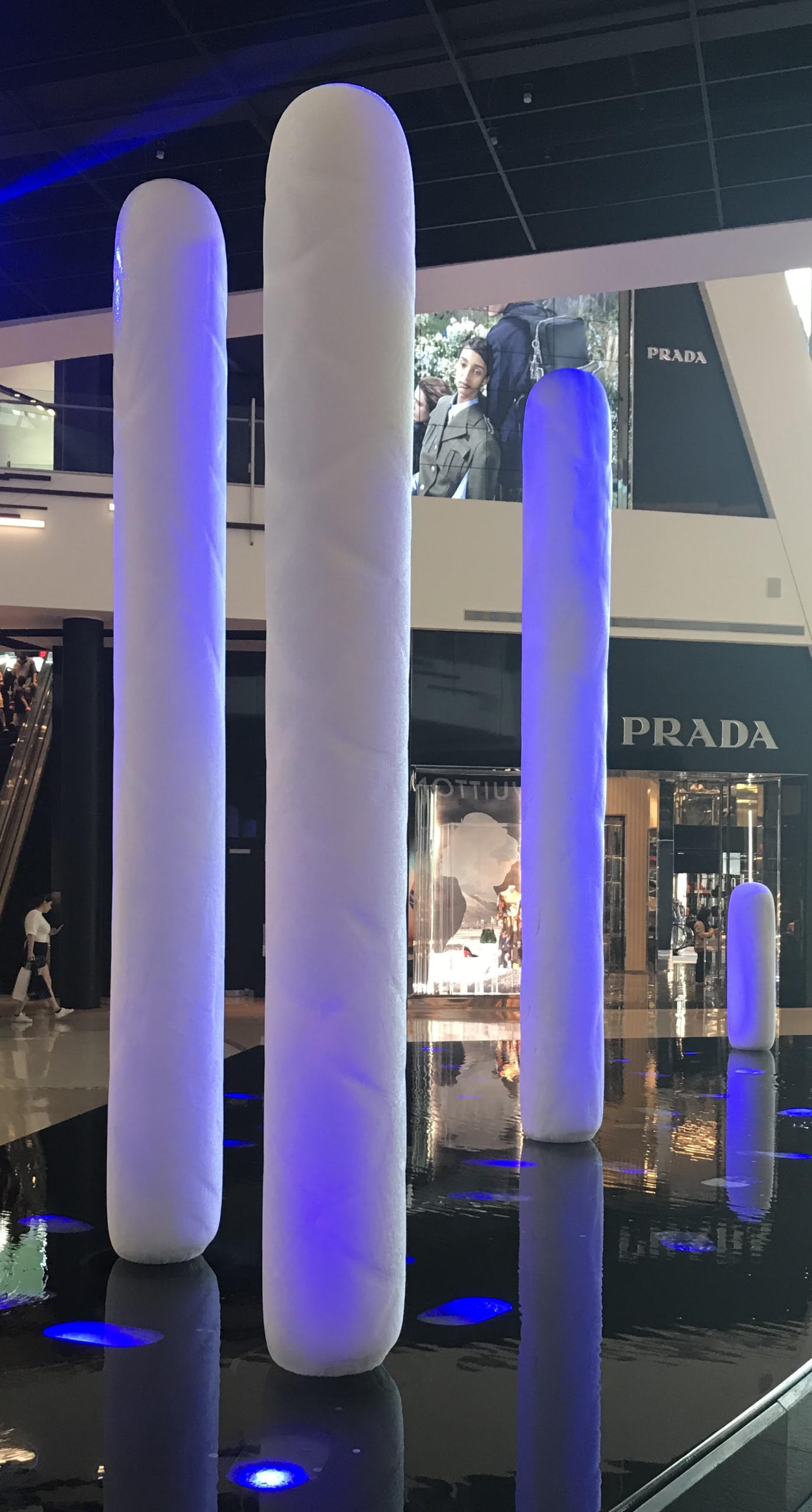
The design firm Wet, based in Los Angeles, is responsible for many of the innovative and spectacular water features found on the Las Vegas Strip. Their work includes the Bellagio Fountains, the Volcano at the Mirage and the curved water wall entitled Lumina that wraps around the Aria’s porte cochere. Wet was founded by Mark Fuller, a former Disney Imagineer, Melanie Simon and Alan Robinson. The firm holds more than 60 patents and has designed more than 200 water features made of water, fire, ice, fog and lights. Wet was asked to design several water features in MGM’s expansive CityCenter property. One of those installations, entitled Glacia (shown here), was placed near an entry to Crystals Mall in 2009.
Glacia is comprised of 13 columns of ice, some as tall as 15 feet, that seem to emerge from a black pool of water. The columns gradually change color as the translucent surfaces are struck by the colored lights lurking beneath the water. The columns’ cores can be cooled to -5 degrees Fahrenheit, and shafts change shape as they continually melt and refreeze. The amount of air mixed with the water during the freezing process can change the columns from a frosty white to crystal clear monolith. These features generate a visual experience that is ever-changing and never repeats itself.
However, this work is not simply a visual experience. As you enter the mall you can feel the cool air created by the installation. As you get closer you can feel the freezing air dropping around the columns glide across the pool of water and hitting your knees. Several columns are placed close enough to the edge of the pool so they can be touched. Irresistible. It is especially dramatic when you enter the building from outside when the scorching summer temperatures can reach 110–120 degrees. As if that weren’t enough, the work is bathed in a “tonal poem” written by Grammy award-winning musician and former Grateful Dead drummer Mickey Hart. The experience is magical and immersive.
What I find curious is that there is no artistic attribution given to this installation around the work itself. Most of the information I gathered is available online for those curious enough to do the research. Certainly the work is the result of a creative and complex collaboration with countless individuals, but even the firm’s name is not displayed. I wonder if this was mandated in their contract or rather a bold statement that the work stands on its own. It is even more curious that the soundscape is the only part of the work that was attributed to a specific individual. Regardless, like the medieval cathedrals, the authors of this work will likely remain unknown.
